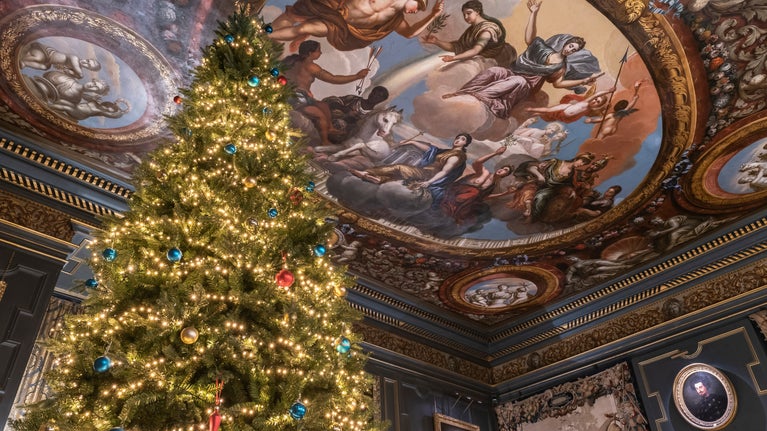
Immerse yourself in history
Meet people from the centuries gone by, learn about the unique artworks in our care and understand more about historic traditions.

Etched on the walls of many of the houses, barns and buildings that we care for are symbols known as witch marks or apotropaic marks. Discover why these marks were added to buildings and what they mean.
Despite their name, witch marks have very little to do with witches or witchcraft. The markings are believed to have turned away evil, providing protection to the building and those who lived or worked within it. The evil that was being ‘turned away’ may have been demons, witches or the then ever-present evil eye.
Witch marks are also referred to as ritual protection marks or apotropaic markings. The word apotropaic comes from the Greek word apotropaios which is translated as turning away (evil).
Witch marks can be found in all types of buildings from barns and cottages to grand country houses to churches. The markings can also be found on furniture, gravestones and in caves such as Reynard’s Kitchen Cave in Dovedale.
Markings are usually found next to windows, doorways and fireplaces in buildings. These draughty locations were the most vulnerable and potential entrance points for demons, witches and evil spirits. The witch marks were etched into stone, plaster and woodwork.
Protection marks include daisy wheels, overlapping Vs, the Auseklis cross and consecration crosses. Other types of marks appear as pentagons, mazes, crosses and diagonal lines. Meanwhile deliberate burn marks found on wooden beams, were thought to protect a building against fire.
Although many of the symbols associated with witch marks date back to much earlier times, the great majority are found in buildings dating from the medieval period through to the early nineteenth century. This was a time when belief in witchcraft and the supernatural was widespread and the use of magical symbols and ritual objects was part of everyday life.
Other forms of protection from evil were charms and ritual concealments. Often shoes, dolls, cats and witch bottles are found hidden away within buildings.

Meet people from the centuries gone by, learn about the unique artworks in our care and understand more about historic traditions.
A series of witchmarks, believed to ward off evil spirits, were discovered in a room built to accommodate James I at Knole following the Gunpowder Plot in 1605.

Discover the history of Bodiam Castle. Find out who built it, its royal connections and what historic graffiti can tell us about the castle’s past.

Discover how religious persecution, treason and debt stopped Tresham’s vision from being fulfilled and why Lyveden stands as a reminder of his act of quiet and creative rebellion.

Learn about the Reformation, the European-wide conflict over Christendom that gave rise to the distinction between Catholic and Protestant, and the links between the movement and the places in our care.
